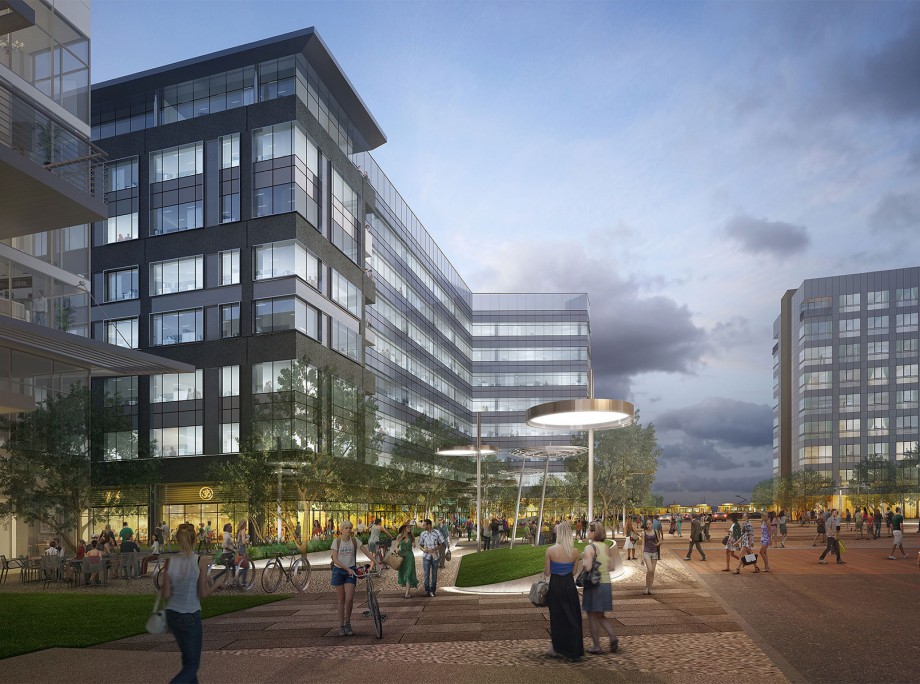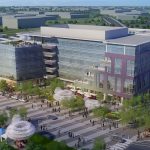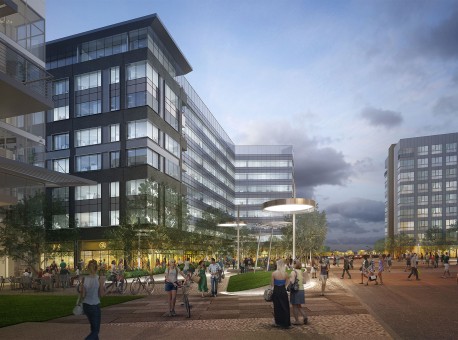Terry Willis – How transit-oriented developments are transforming US cities
Construction Dive
February 2, 2017
The trend toward walkability and the desire to live in an urban setting has been rising in popularity for years. Even the suburbs, once developed with maximum neighbor-to-neighbor buffers in mind, have started to play host to mini mixed-use, village-style complexes in an effort to give residents a community feel.
Corporate America has latched onto this wave as well. The last few years have seen companies once happily ensconced in relatively small towns or on the outskirts of the nearest city making the move to major metros in the hopes of attracting and retaining a younger workforce.
Caterpillar recently announced plans to move its headquarters to the Chicago area after a near-100-year run in Peoria, IL, and a new McDonald’s corporate center is already underway in the Windy City’s downtown. Even subtle moves tell a big story. Marriott Hotels is sticking with Bethesda, MD, as it begins to develop its new offices, but it will move to an area of town that promotes a walkable, connected environment for its employees.
These shifts are happening all over the country, but one of the most integral elements to each is its proximity to convenient and reliable transportation. City planners and corporate recruiters alike are discovering that mass transit is in high demand not only for millennials but for many others who simply are tired of spending hours a day in traffic commuting to and from work.
Transit-oriented developments (TODs) build on all these concepts and take them to the next level. Not only does mass transportation figure into the plan; it is the plan.
Where development meets transportation
The trend toward increased walkability and transit options is growing so much that train and bus stations themselves are getting major overhauls to keep pace with increased ridership. The Port Authority of New York and New Jersey is building a new bus complex in New York City, and train stations in major metros like Baltimore and Washington, DC, are preparing for major redevelopment.
“Development and transportation go hand in hand,” said Art Guzzetti, vice president of policy with the American Public Transportation Association. This move toward megastations, he said, is reminiscent of a former time when train travel was the only option, and each city hub — no matter how small the population — served as a grand and luxurious introduction to travelers.
Terry Willis, architect and principal at KTGY in Denver, said that while the term TOD is relatively new, the concept is not. “New York City and other places with mature transit systems have been doing TODs for the life of the city,” he said.
Everyone has heard the stories about residents in some areas of New York who never have to travel beyond the borders of their neighborhoods because they have all the necessary services and shopping within easy reach. When they do, they take the subway to wherever they need to go. That’s essentially what a modern TOD strives to accomplish — provide shopping, retail, entertainment needs and even employment for residents, along with a handy path in and out.
Denver dives into the TOD trend
Each TOD has a different flavor, reflective of the surrounding neighborhood, if it’s done right. Willis said that in Denver, there are some TODs built around sports venues, while others are built around residential developments or offices. Affordable housing is always smart to build near a TOD, he said, because not only does it attract residents who want to save money on their transportation costs, but it also provides developers with potential tax credits.
Years ago, Denver speculators purchased up swaths of land near planned rail stations for the Regional Transit District’s light rail and commuter rail systems “when the picking was good” so that they could take advantage of the various methods of funding assistance for such residential construction, Willis said.
He added that Denver city planners succeeded in organizing and designing all train stops for maximum benefit, differentiating between those with change potential and those expected to remain stable, like those in long-term residential neighborhoods where no significant development was expected.
Willis and KTGY are currently in the design phase of a 5-acre TOD between Denver and Denver International Airport along the RTD’s commuter line. The first phase of developer Forest City’s Central Park Station development will see apartments, the public plaza, a hotel and office components, with construction expected to kick off in the spring of 2018.
How Phoenix approaches TODs
Planning is key in the Phoenix area as well, according to Albert Santana, director of high capacity transit for the City of Phoenix. Instead of planning line-wide TOD development for its Valley Metro Rail system, in operation since 2008, the city tackles one station at a time.
“We have a station-by-station perspective. We see what’s in this half mile or quarter mile and look at appropriate uses,” he said, adding that this mindset has been successful so far and has led to almost $9 billion in economic development around the stations.
Santana said the city is usually hands-off to major TODs in historic areas or where development is clearly not an option, but, when it does build around stations, it’s all about high density — a catchphrase that has triggered protests in cities like Los Angeles, where voters will decide in March whether to put a two-year moratorium on the rezoning necessary to allow those types of projects.
“You have to go out there and have those conversations,” Santana said. “You have to go out there and talk to people and get their perspective.” That, he said, cannot be accomplished behind a desk at city hall.
Hillary Foose, director of communications and marketing for the Valley Metro in Phoenix, said she believes the city has succeeded in promoting development while preserving the integrity of historic and cultural areas. “It’s a beautiful mix of new and old,” she said.
In Phoenix, however, and in most true TODs, high density is encouraged and even rewarded with height and other variances and allowances because more people equates to higher ridership. Foose said TODs, along with precision placement of rail lines near Arizona State University in Tempe and along popular city bus routes, made it possible for the system to reach its 20-year goal of 50,000 daily riders within just a few years.
San Diego finds creative solutions to development needs
San Diego is also on the same page with its high-density development philosophy. Vince Mudd, principal and COO at Carrier Johnson + CULTURE, said the Park + Market project in San Diego’s downtown is a strong example of how, with city support, developers can come up with solutions that let everyone win.

The original Park & Market site — which now has a residential tower, a 60,000-square-foot office building and 30,000 square feet of retail all built around a public plaza — had one older building and a lot of open space that the city didn’t use. Developers built the entire space around an “activated square” that has events for all ages and residents, office tenants, trolley line users and the general public.
“It’s powerful,” Mudd said, “because you didn’t lose the park.”
In another development in downtown San Diego, designers compensated for lost green space by incorporating it into five large terraces on the building itself. All of this collaboration on the part of the city, Mudd said, is an effort to make up a deficit of an estimated 50,000-plus living units in the area.
To that end, he said, developers are creating vertical cities, with education, for-rent and for-sale housing, retail, entertainment and education all in one block. In addition, the city sweetens these kinds of deals with height variances and increased capacity in exchange for the inclusion of below-market-rate units.
TODs are driving transit development in many areas, but not just for the economic benefit; they also assist in building communities and giving people more options in connecting to other communities. “We’re on the precipice of change,” Guzzetti said.


